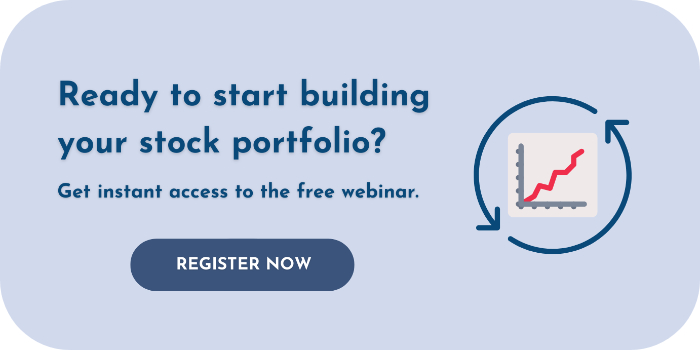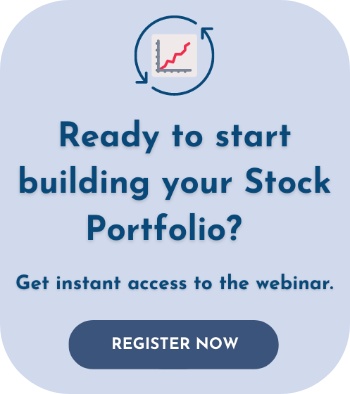Rental Housing |High-Yield Savings Accounts |Certificates Of Deposit | Money Market Funds | Series I Bonds |
S&P 500 Index Funds | Dividend Stocks | Value Stocks | Government Bond Funds | Cryptocurrency
There are many possible ways to earn a high return on your investment. You can invest in various funds, stocks, and other assets to grow your money over time. Of course, “high return” is a relative term. A high-yield savings account has a high return compared to other savings accounts but not compared to a successful index fund. Higher returns also tend to come with higher risks. So when you’re making your investments, you need to balance your risk tolerance against your desire for gains.
We’re about to discuss 10 of the best high return investments and their risks. Read on to learn more about each of these options.
The 10 Best Investments With High Returns in 2022
So, what are the 10 best investments? For the year 2022, we chose the following selections:
-
Rental Housing
-
High-Yield Savings Accounts
-
Certificates Of Deposit
-
Money Market Funds
-
Series I Bonds
-
S&P 500 Index Funds
-
Dividend Stocks
-
Value Stocks
-
Government Bond Funds
-
Cryptocurrency
1. Rental Housing
Rental housing is a great opportunity because it rarely loses value. In most parts of the country, real estate prices are only going up. Even with mortgage rates on the rise, they’re still extremely low in historic terms, so financing a rental property is still a perfectly viable option. Even better, you can purchase a property outright, and avoid paying any interest.
Real estate investing isn’t for everybody. You’ll become a landlord overnight, which means you’re responsible for maintenance and dealing with tenants. Unless you’re running a large commercial property, the returns won’t justify you paying a full-time property manager, so there will be some work involved. Real estate can also take a while to sell, while stocks and bonds can be sold in seconds with a smartphone app.
Rental housing risks: While real estate tends to go up, there’s no guarantee. Back in the mid-2000s, people were wildly overpaying for houses and taking out second mortgages to finance their lifestyles, all in the expectation that the market would continue to boom. Furthermore, you may have major expenses, such as replacing the roof or furnace. If you don’t have cash on hand, you’ll have to go into debt just to maintain your property.
[ Want to learn what Active vs. Passive Income looks like for stock investors like you? Find out how you can take advantage of Passive Stock Investing in our FREE webinar! ]

2. High-Yield Savings Accounts
High-yield savings accounts are exactly what they sound like: savings accounts with a higher yield than the more traditional offerings. Many banks offer high-yield accounts in exchange for a higher minimum balance. Online savings accounts also offer higher rates, since they don’t have to pay the overhead of running brick-and-mortar branches.
As we already discussed, “high-yield” savings accounts don’t have high returns in the same sense as most of these other investments. However, they’re an easily-available source of money that’s great for short-term savings. If you’re saving for a wedding, car, or vacation, what would you rather do? Keep the money in a checking account or ordinary savings account, or earn a higher yield?
Savings accounts are also a great way to keep your emergency fund. Most financial advisors recommend keeping at least three to six months’ worth of expenses to pay for emergencies, so why not keep those funds in a high-yield account?
High-yield savings account risks: If you’re saving with a U.S. bank, your savings account will be insured by the FDIC for up to $250,000. If you’re investing anywhere near that much, you should consider keeping most of your money in higher-earning investments.
3. Certificates Of Deposit
Certificates of deposit, also known as CDs, are a special type of bank account that delivers higher rates than ordinary savings. When you sign up for a CD, you agree to deposit a particular amount of money and leave it in the account for a minimum amount of time. The longer the time period, the higher the interest rate. When the CD matures, you can take the cash, or reinvest the money into a new CD.
CDs can be issued for a wide range of time periods, anywhere from a few weeks to several years. Interest is paid throughout the investment period, and accrues until the CD matures. Keep in mind that you’ll lose your special interest rate if you withdraw any money before maturation. You’ll also pay a penalty fee in addition to the lost interest.
CDs are a good choice for seniors, who can’t afford to take many risks. It’s a way to earn a small return on your savings, while still keeping your money safe for the long term.
Certificate of deposit risks: Like high-yield savings accounts, CDs are insured by the FDIC, so you don’t have to worry that your money will disappear or your CD will lose value. That said, locking up your money can be risky in and of itself. If rates go up or better opportunities materialize, you won’t be able to take advantage.
4. Money Market Funds
Money market accounts are similar to a high-yield savings account, but with more liquidity. You can often attach them to a debit card or a physical checkbook. This generally yields lower rates than a high-yield savings account, but you’ll still get better returns than with a normal checking account.
Money market account risks: Money market accounts are FDIC insured, the same as checking and savings accounts. Money market funds, which are a different investment instrument, are not.
5. Series I Bonds
With interest rates still near historic lows, there’s been less demand for long-term U.S. Treasury bonds. Who wants to make a 10- or 30-year investment when the returns are so low that they’re guaranteed to get wiped out by inflation. Thankfully, there are better options.
The Series I bond is specifically designed to protect against inflation. To begin with, it pays a base interest rate the same way other bonds do. But on top of that, it pays an additional bonus rate that fluctuates to compensate for inflation. In other words, you earn higher interest during rates of high inflation, and lower interest during low-inflation periods. The net result is that your return is guaranteed to beat inflation.
Series I bonds are issued for 30-year terms, although they can be redeemed for cash before they fully mature. That said, individual investors can only buy $10,000 worth of these bonds in a year. That goes up to $15,000 if you apply $5,000 worth of your tax refund towards a bond purchase.
Series I bond risks: In terms of default risk, U.S. Treasury bonds remain some of the safest in the world. And with the inflation-adjusted interest, your return on investment is practically guaranteed.
6. S&P 500 Index Funds
If you want to earn a better return than you would with a bank account or bonds, you’ll have to venture into the stock market. Stocks can earn much higher returns, so your money grows faster. On the flip side, individual stocks can be a risky bet. Even the most promising companies have bad years, which can end up costing you money.
A good way to mitigate this risk is by investing in an index fund. An index fund is a collection of stocks chosen to track a particular index’s performance. The most popular of these is the S&P 500, and there are a number of S&P 500 index funds.
These are 500 of the largest U.S. companies, chosen from across many industries. Some of these are even holding companies like Berkshire Hathaway, which is already incredibly diversified in its own right. The net result is a fund that tracks with the market as a whole, rather than with any particular stocks. Since the market as a whole tends to go up over time, you’re looking at a solid long-term investment.
S&P 500 index fund risks: Although the market tends to go up, that’s not always the case. If there’s a financial downturn, even the best-diversified investment portfolio can take a turn for the worse. You shouldn’t invest money in these funds if you need to access it in less than three years. The longer-term the investment, the more you’ll benefit from the market’s general upward trend.
7. Dividend Stocks
Generally, people invest in stocks because of the potential for growth. But this can put large, successful companies in a bind. If you’re General Motors or Verizon, you’re not going to see the same year-over-year growth as and up-and-coming company. So, how do you continue to attract investors?
The answer is to pay dividends. Many big companies pay a portion of their profits back to the shareholders at the end of each fiscal year. These payments are known as “dividends,” and they’re great news for long-term investors. You put your money into dividend stocks, and every year, you get a payment. You can either keep the cash, or reinvest the dividend payment into even more stocks.
These stocks can be a great investment, but they’re not for everybody. Unlike with a fund, you have to pick and choose your own stocks. This means you need to have the time and energy to do your own research and maintain a familiarity with the companies you’re investing in.
Dividend stock risks: Dividend stocks tend to be safer than other stocks, simply because they’re for large, established companies. But that doesn’t mean they’re guaranteed. Market disruptions could cause them to lose value, and even a single bad year means you’ll miss a dividend payment.
8. Value Stocks
Coronavirus notwithstanding, the last few years have been an incredible time for stock growth. Unfortunately, this has led many stocks to become overvalued. A lot of investors are leery of putting their money into some of the most successful companies, precisely because the stock price has exceeded any rational valuation.
Value stock funds specifically seek out stocks that are undervalued compared to their financial performance. The idea is that while these stocks may currently be underperforming, they’re less vulnerable to financial downturns. Stocks that are overvalued, on the other hand, are the first to suffer when the economy goes south.
Value stock risks: Because they’re undervalued, value stocks are inherently safer than other stocks. That said, they’re still vulnerable to the same market forces. In other words, they’re still going to fluctuate a lot more than bonds. But when it comes to stocks, these are some of the safest options.

9. Government Bond Funds
Government bond funds are funds that invest their money into a collection of U.S. government bonds. These include Treasury bonds, bonds from various government agencies, and oftentimes state and local bonds. In order to earn the highest returns, these funds typically invest in short-term bonds and continually reinvest the money as the bonds mature.
In addition, these bond funds also invest in bonds from Freddie and Fannie Mae, the two major federal housing lenders. This gives you exposure to the real estate market as well as the general bond market. All in all, you’re looking at a reliable investment that will beat inflation, albeit at lower rates of return than index funds.
Government bond fund risks: Federal bonds are some of the safest in the world, because the U.S. government backs them. Unless the United States goes into default, you’re going to get your dividend payments. State and local bonds are a bit riskier, but are still safer than most corporate bonds. The main risk is that inflation may continue to rise, wiping out your returns.
10. Cryptocurrency
Cryptocurrency is a digital currency that’s tied to an online record known as the blockchain. The blockchain keeps track of cryptocurrency transactions, which helps prevent theft and digital counterfeiting. The most popular cryptocurrency is Bitcoin, although there are many others, such as Ethereum and ZenCash.
Cryptocurrency has incredible potential for growth. From 2020 through mid-2021, Bitcoin rose from $10,000 a coin to more than $60,000. You simply won’t see that kind of performance from any traditional financial instrument.
Cryptocurrency risks: The main problem with cryptocurrency is that it’s a purely speculative investment. Unlike a stock, its value isn’t tied to a company. Unlike a bond, there’s no guaranteed return. And unlike money in a savings account, cryptocurrency can be hard to spend. All of this makes it very volatile, since the only thing that determines its value is how much people are willing to pay for it. As of June, 2021, Bitcoin has fallen back to $30,000, disappointing many people who invested at the $60,000 high water mark.
Not only that, but cryptocurrency accounts aren’t guaranteed by the FDIC. If your crypto wallet gets hacked and your Bitcoin gets stolen, you have no recourse; you’re just going to have to eat the loss.
Why You Should Invest Start Investing Today
Investing your money has many benefits. To begin with, it’s the only way for most people to retire. Unless you’re incredibly rich, there’s no way you have enough cash set aside to pay for your retirement. Even if you can only afford to invest a little at a time, it’s never too early to start putting some money aside.
Another good reason to invest is that it’s a better use for your money. Let’s say you’ve just inherited several thousand dollars. Sure, you could put it in your checking account, but it’s not going to gain any value. In fact, inflation will actually cause your money to lose purchasing power. By investing your money and letting it grow, you avoid this, and end up earning money instead.
Summary
There are any number of ways to invest your hard-earned money, but not all investment options are right for everybody. To find the optimal choice, you need to decide on an investment timeframe, and balance the investment risks versus the potential rewards. After that, you’ll be ready to start investing!
Ready to cashflow your investment portfolio?
Find out how Andy Tanner uses the stock market to generate cash flow with safe, steady investing strategies – no matter what is happening in the overall economy.
Register here for Instant Access to Learn How To Start Stock Investing For Cash Flow, and get started learning how to start a successful investment portfolio today!


